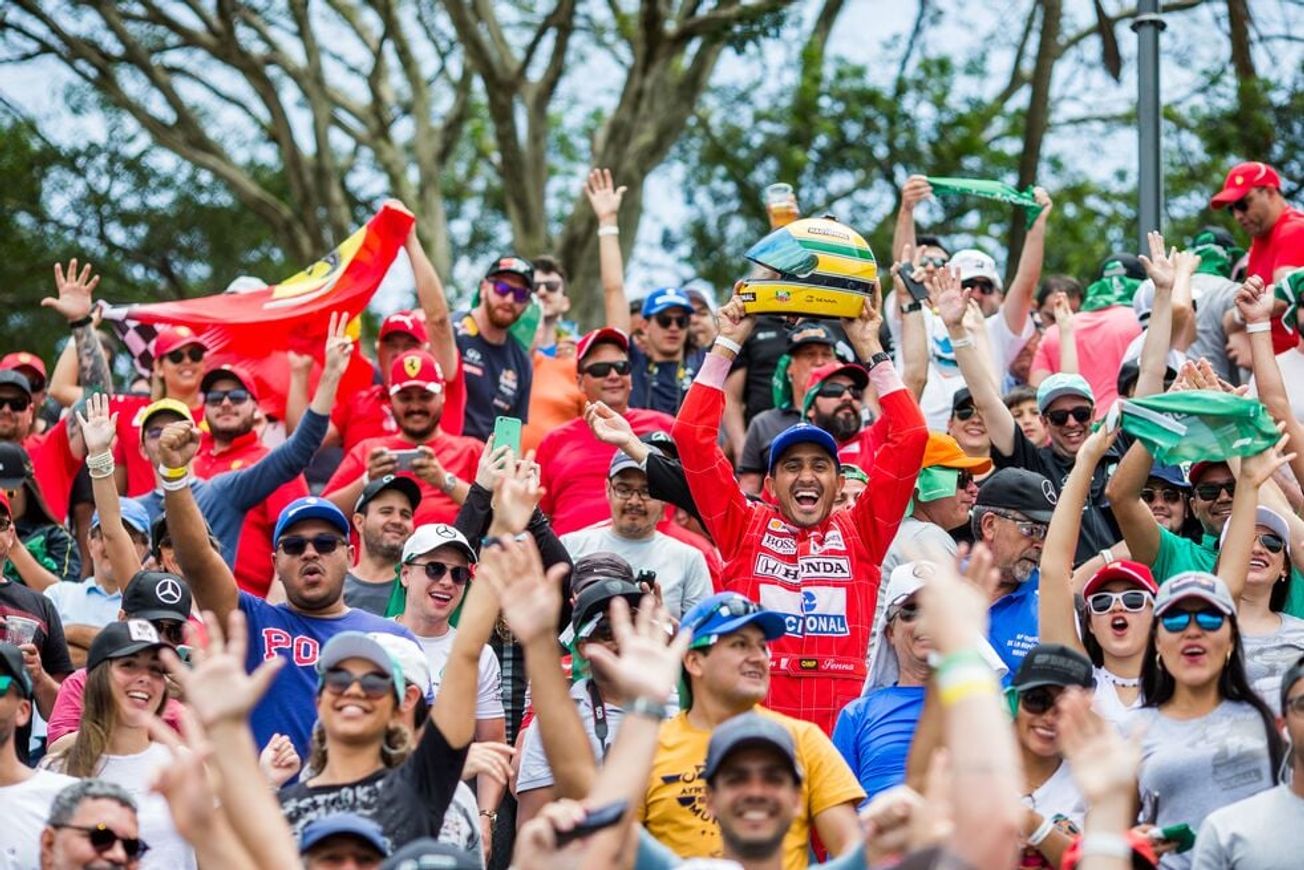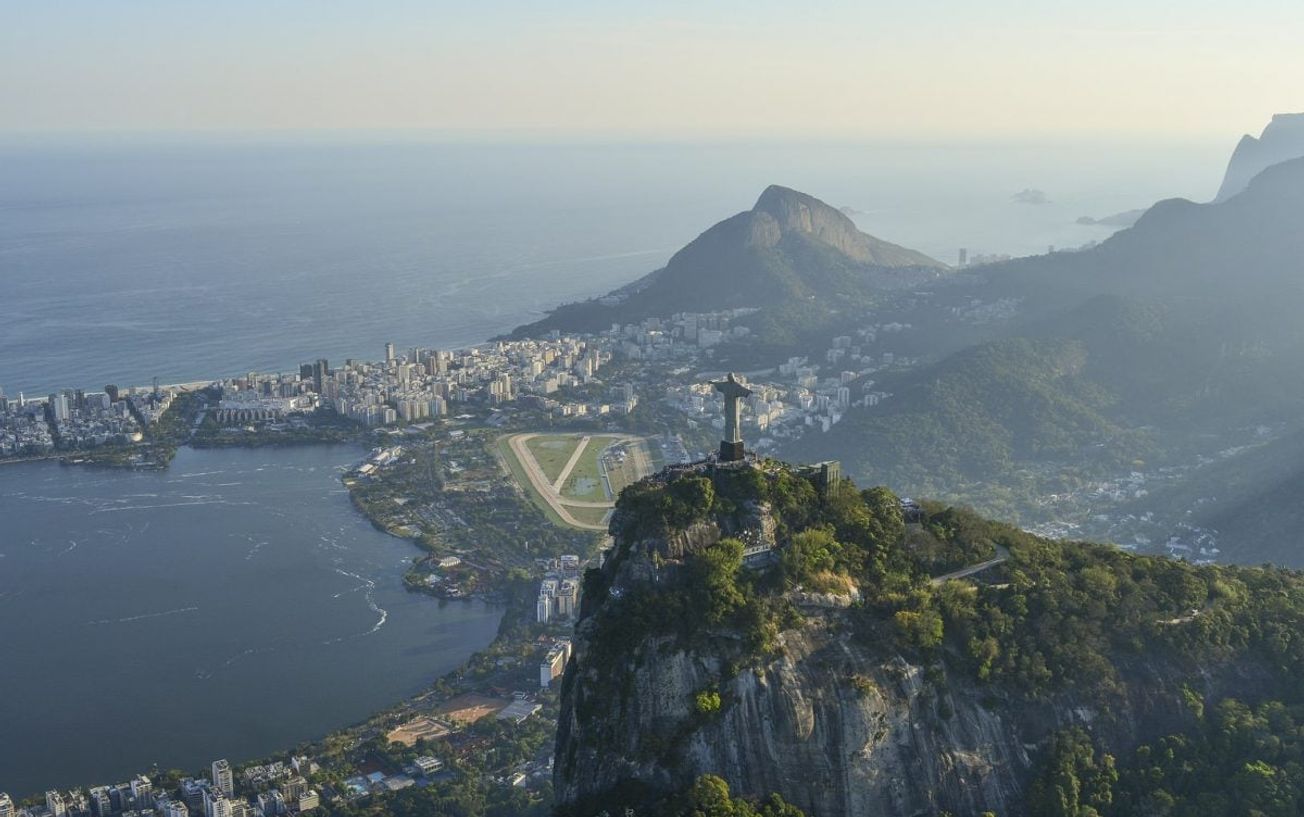Trackguide – Read all about the Interlagos circuit!


Check some other articles


F1 2024 recap: Dive into the final standings, relive the memorable moments, and get a glimpse of what’s in store for F1 2025.

Curious about circuit Silverstone? In this blog, we tell you everything you need to know about the British Grand Prix!
The historic Interlagos circuit has been a popular destination for racing fans from all over the world for decades. The official name of this circuit is actually the “Autódromo José Carlos Pace”. The 4.4-kilometre circuit has many sections that can be driven at top speed, despite elevation changes and some tight corners. Many drivers find Interlagos an interesting circuit because of its hilly surface, which is very demanding for the drivers and the power of the engines. We tell you everything you need to know about the Brazilian Grand Prix: all about the circuit, how to get to the track and, last but not least, the weather.
Directly to:
1) Interlagos circuit
2) Interlagos corners
3) Interlagos DRS Zones
4) Stands at Interlagos
5) Where is the Interlagos circuit
6) Is São Paulo fun to visit
7) What is the weather like at the Interlagos circuit?
8) Visit the Grand Prix in Brazil
At the Autodromo José Carlos Pace, you can always expect a great spectacle and ambitious drivers who want to finish on top. We take you around this Brazilian F1 circuit and tell you all about the Interlagos corners.
The race starts on a long straight with an uphill gradient, with the first corner being the most popular place to overtake. You then arrive at the “Senna S” corners (Turn 1,2), a series of alternating corners with different angles of attack and inclination. The “Senna S” leads you to the “Curva do Sol” (turn 3), a wide left-hand bend that culminates in “Reta Oposta”, the longest (but not the fastest) straight on the circuit. The “Reta Oposta” is followed by a pair of descending left-hand turns known as the “Descida do Lago” (turn 4,5), after which comes a short uphill straight to the rear of the pit building.
This is followed by a slow section with small turns and elevation changes. The first corner of this section is known as “Ferradura” (Turn 6,7), a descending right-hand turn that leads into “Laranjinha” (Turn 8), another right-hand turn and also the slowest point on the circuit. The next turn leads to “Pinheirinho” (Turn 9), a left-hand turn on flat terrain; this is followed by “Bico de Pato” (Turn 10), a right-turning turn, and then “Mergulho” (Turn 11), a left-hand turn with a constant radius profile that sends the driver straight into a sharper left-hand turn called “Junção” (Turn 12).
“Café” (turn 13) is an ascending left turn that marks the start of the long top speed section. The drivers then reach “Subida dos Boxes” (turn 14), a long ascending left-hand turn with a 10% gradient that requires a lot of power from the cars. Finally, at the end of this turn comes “Arquibancadas” (turn 15), a wide left-hand turn at high speed that leads into the final straight with the start/finish line.
The series of left turns from the exit of “Junção” to turn 1 is usually taken at full speed and considered a long straight. This section is one of the longest full-speed sections on the Formula 1 calendar and therefore requires solid engine reliability.
Below is a list of all Interlagos corners with name, number, direction and speed:
| Name | Corner(s) | Direction | Speed |
|---|---|---|---|
| Senna S | 1 & 2 | Right, left | Average |
| Curva do Sol | 3 | Right | High |
| Descida do Lago | 4 & 5 | Right | Average |
| Ferradura | 6 & 7 | Right | Average |
| Laranjinha | 8 | Right | Low |
| Pinheirinho | 9 | Left | Average |
| Bico de Pato | 10 | Right | Low |
| Mergulho | 11 | Left | High |
| Junção | 12 | Left | Low |
| Café | 13 | Right | High |
| Subida dos Boxes | 14 | Left | High |
| Arquibancadas | 15 | Left | High |
Dit bericht op Instagram bekijken
Interlagos has two DRS zones. The first zone is located along the straight between the last corner (Junção) and the Senna S-bends, while the second zone is along the straight after the Senna S-bends and before the Descida do Lago. DRS (Drag Reduction System) is a technology in Formula 1 that allows drivers to open their rear wings to allow for less drag and therefore gain more speed on straights. The DRS zones at Interlagos can therefore play an important role in overtaking, creating even more exciting races.
The Interlagos circuit is one of the few Grands Prix on the Formula 1 calender where standing-room (general admission) tickets are not on sale. That is one of the reasons why this track’s capacity remains locked at just 60,000 spectators per day. For many race fans, the best spots along the track are the two places where drivers can overtake each other most easily under normal circumstances – namely grandstand M, which is located on the outside of turn 1. The second part of grandstand G is also particularly suitable if you like to see a lot of action. This grandstand does not have seats but benches without backs. So it is less comfortable, but you do have a good view of turn four where a lot of the overtaking takes place.
With 40 years of history and numerous memorable highlights, the home of the Brazilian Grand Prix is a special place for many Formula 1 fans. Although the circuit is known as Interlagos – which literally means ‘between two lakes’ – it is officially called the Autodromo José Carlos Pace, in honour of Brazilian driver Carlos Pace, who won the Grand Prix here in 1975 and met an untimely end two years later in a plane crash. Brazilian Emerson Fittipaldi won the first Brazilian GP at the Interlagos circuit in 1973.
An F1 race at the Interlagos circuit involves 71 laps, for a total length of 305.94 km. Interlagos is notorious for its many bumps, causing some damage to the bottom plates of some cars. The Autodromo Jose Carlos Pace is known for delivering exciting races because of its challenging track, high temperatures and changeable weather conditions.
Dit bericht op Instagram bekijken
If you want to know the Interlagos circuit weather, you should keep an eye on São Paulo temperatures, which typically range between 17°C and 25°C in November. Those temperatures are perfect to visit the race without being too hot or too cold. You can expect rain in São Paulo for about half the month of November. To avoid any surprises, we recommend keeping an eye on the weather forecast in advance and always bring a poncho and/or an umbrella with you.
Gaurulhos airport is widely used for international flights and is located about 30 kilometres east of São Paulo. If you hire a car there, be aware that traffic in the city can be gridlocked at times and navigating can also be a challenge in itself. Uber is popular there so it can be a great way to find a cheap ride. Buses in São Paulo are cheap but very slow. If you are looking for a faster way to get to and from the circuit or airport, it is therefore a better option to take the metro. In fact, the Autodromo metro station is just 500 metres from the circuit entrance.
São Paulo, or Sampa to the locals, is South America’s largest metropolis. Thanks to its beautiful museums, samba beats and fantastic food, it is a magnet for travellers. The metropolis in Brazil’s south-west is always on the move. No less than 21 million inhabitants live in São Paulo! It is nevertheless recommended to stay informed of your country’s travel guidance concerning São Paulo, due to potential instability or security concerns associated with criminal activity in the favelas.
Experience the excitement and thrill of the Formula 1 season at Interlagos and discover why this legendary circuit is so loved by fans and drivers around the world. It is a circuit where new chapters are added to the rich history of the Brazilian Grand Prix every year. You will enjoy an incredible spectacle on the track, but you will also be amazed by the impressive city of São Paulo. So what are you waiting for? Book your tickets now with P1 Travel and prepare for an experience you will never forget!


